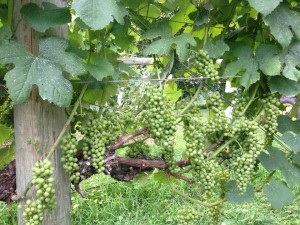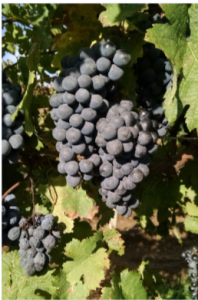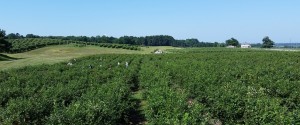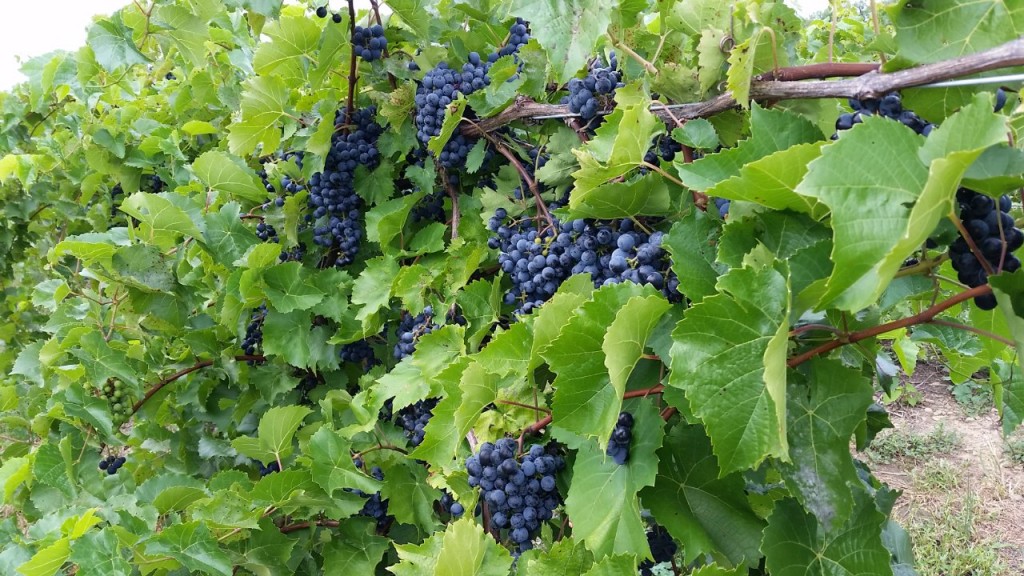2017 Harvest Update: October 27th
 The warm and sunny weather held throughout the week, though it is likely to change for the weekend. Harvest—at least the part that involves bringing in grapes from the vineyard—is winding down. A few more loads will arrive next week and then we can sit back and see what we have, for a few moments anyway, and then it’s back to work tending the young wines.
The warm and sunny weather held throughout the week, though it is likely to change for the weekend. Harvest—at least the part that involves bringing in grapes from the vineyard—is winding down. A few more loads will arrive next week and then we can sit back and see what we have, for a few moments anyway, and then it’s back to work tending the young wines.
The late season reds, Chambourcin, Cabernet Franc and Merlot, came in as expected—very ripe—and they are beginning their transition into wine in fermenters now. They will be pressed next week, and we’ll then be able to get a full sense of what this vintage really holds. The reds that were harvested last week were pressed, and we’re really excited with the results. Some have made their way into barrel already and are finishing up alcohol fermentation; inoculation with malo-lactic bacteria will follow to continue the natural process of transforming these grapes into great wine. Our Cabernet Sauvignon growers, Cindy, John and Mike Moorhead, were of the opinion that their grapes could hang a little longer to take full advantage of our perfect harvest weather and so we’re waiting patiently and excitedly for them to arrive from the vineyard. This year’s Cabernet Sauvignon vintage promises to be remarkable.
Vidal Blanc is a late-season white wine variety that does quite well in the Eastern United States and Canada. It is a versatile grape, capable of producing wines that range from dry and barrel-aged to sweet and rich ice wines harvested after the grapes freeze on the vine. Our Kisses Trio of ice-style wines —Eskimo Kisses, Hot Kisses and Cinnful Kisses—are made from this variety, and Vidal is also a key player in a few of our popular blends. It, too, is benefiting from the spectacular harvest weather we’ve had with high sugars, low acids and ripe, tropical fruitiness. We started bringing Vidal in this week, along with another stalwart Eastern variety, Catawba. Seeing these grapes arrive at the winery is like seeing robins in late winter—you know that the end is near and wonderful things are ahead. In the case of harvest, it signals the winding down of this phase of winemaking; the crusher and press will be cleaned and stored away until next September, and activity moves from the press pad back to the wine cellar.
We were exceptionally fortunate this harvest. The weather cooperated in ways that it normally doesn’t, and we had a good-sized crop of exceptional quality for most varieties. Others in our industry were not so fortunate—wild fires devastated the heart of the American wine industry in California, and our thoughts are with them. Their harvest was interrupted by the destructive fires, and they are now assessing what can be saved of those grapes that are still hanging while they rebuild homes, businesses and neighborhoods. Closer to home, heavy rains wrought havoc on vineyards in southern Pennsylvania, ultimately compromising the quality of their grapes at harvest.
Like I said, we were fortunate, and we’re thankful for it as we know it will be our turn to face adversity again at some point in these times of increasing climatic variance and more dramatic climatic extremes. We know this only too well as our vineyards are only just now recovering fully from the devastation of the previously unseen frigid weather periods during the 2014 and 2015 winters.
Bob Green
PIWC Executive Winemaker





 We’re in the middle of harvest now, and in a bit of a lull in the pressing schedule. It will be short-lived though —a day or two and we’ll be back working with the late season varieties in full force. But this gives us a moment to look at how the harvest has been to date, and what the outlook is for the remaining weeks.
We’re in the middle of harvest now, and in a bit of a lull in the pressing schedule. It will be short-lived though —a day or two and we’ll be back working with the late season varieties in full force. But this gives us a moment to look at how the harvest has been to date, and what the outlook is for the remaining weeks.